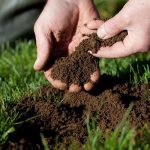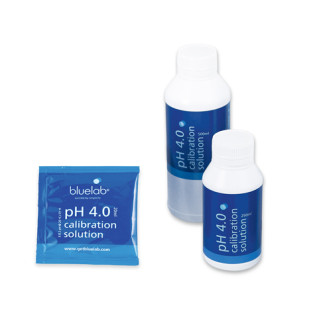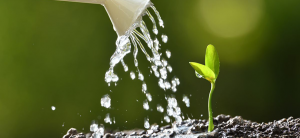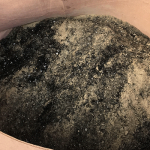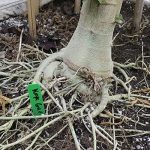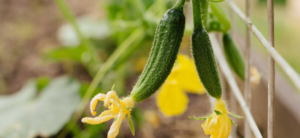
Garden soil and nutrient testing will be your biggest responsibility on a day-to-day basis while growing. Plants are generally pretty resilient, but they can develop some pretty nasty issues if certain aspects of their nutrition are out of whack.
Some of the most common things you’ll need to test include pH, PPM, TDS, EC, Temperature, and moisture. You won’t need to test all of these, but there are a few that are definitely important to measure regularly.
We’ll break this post into two sections - testing your garden soil and testing your nutrient solution. If you’re growing hydroponically, you’ll just need to worry about testing your hydroponic reservoir.
But if you grow in soil, you may need to test not just your nutrients, but your soil, and sometimes even your runoff.
In this post, we are going to teach you everything you need to know about soil and nutrient testing!
Why you need to test your garden soil and nutrient solution
If you want to grow healthy plants you need to put extra work in to test your pH and TDS or EC. You also need to pay attention to moisture content if you grow in soil, or temperature if you are growing hydroponically.
We will break down the importance of each one, since they really are the only two you need to measure when growing.
The importance of pH
There is a direct relationship between plant health and pH. If the pH of your soil or nutrient solution is too low or too high, your plants will suffer. There is a sweet spot for plants when it comes to pH.
- Soil: 5.5-6.5
- Hydroponics: 5.5-6.0
If your pH isn’t within the desired range, the biggest risk you face is nutrient uptake issues.
Often times when you notice nutrient deficiencies in your plant, its really a pH issue. If you don’t take the time to balance your pH, your plants will show sickly, slow growth. You can learn more about this relationship in our blog post on nutrients and pH.

The importance of TDS and EC
The other important testing you’ll do is for TDS (Total Dissolved Solids). One thing that can make this confusing is when you hear people talk about PPMs (Parts Per Million).
In reality, TDS is measured in PPM. So, to make it simple, your TDS meter will give you a reading in PPM.
The other testing term you may hear get tossed around is EC (Electrical Conductivity).
This can also complicate things as well, as some people wonder if they need to test for TDS and EC. But, these actually measure the same thing. If you simply test one of the other, you are good to go!
Some growers claim that EC is a more useful metric to test your nutrient solution for.
You can still use a TDS meter, and simply convert your findings (in PPM) to EC.
Garden soil testing
Successful growers have one thing in common - they test their garden soil. If you are growing organically, this is especially important.
How often do I need to test my garden soil?
Before we get too deep into garden soil testing, we need to define exactly what it is.
Say you purchase some Fox Farm Ocean Forest potting soil. Do you need to test this soil often? Probably not. You already know that this specific soil is pH balanced to 6.3-6.8. But, it wouldn't hurt to check it after a few feedings.
And, if you are planning on reusing your soil, or you make your own soil, you absolutely need to test it!
For the most part, this is something you don’t need to do too often. You can probably get away with doing it just a few times per growing cycle.
This is under the assumption that you take the time to test your nutrient solution before feeding, though.
At the very least, test your soil before each growing cycle. Now, let’s get started with testing your garden soil pH.
How to test your garden soil pH, TDS, and moisture
Garden soil testing can actually be really easy. Using home testing kits, such as the Soil Savvy Test Kit is one option.
This tests for the two most important things you need to know in regards to your soil. All you do is add your soil to the tester, and it tells you:
- Soil pH
- Levels of 14 nutrients (including N-P-K)
Plus, all results are available online. This does take a bit of work though, along with some waiting.
If you want it to be really simple, all you need is a tool like the Bluelab Soil Pen. This one in particular measures the pH and temperature of your soil, so you can adjust accordingly.
Another important measurement if you are reusing soil or making your own is the moisture content. You don’t want super dry soil, but you also don’t want soaking wet soil.
You need to achieve a good balance for optimal plant health. A moisture meter will help with this.
The Active Air 2-way pH and moisture meter is a great way to simultaneously test two of the more important controls in your grow - pH and moisture.
Or, you can grab their Rapitest 4-way Analyzer. This tests for everything you need to know, including pH, NPK, sunlight exposure, and moisture!
Fixing issues in your soil
If you are growing in something inert, such as coco, you likely won't have any problems.
But, with some hotter soils, you may find that your pH varies. You can try flushing and see if this fixes it. Otherwise, you may need to grab some dolomite lime (powdered) to maintain pH stability.
Most often, you run into issues with soil nutrition when you try and make your own soil. Bagged potting soil will typically not cause any issues. If you are planning on making your own soil, try to follow a solid recipe, like our super soil recipe.
Don't stray from the instructions when mixing your own soil, as you can omit or overdo it with vital nutrients!
If you are looking for an easier way to test your soil pH with the same tool that you test your nutrient solution with, read to the end.
Nutrient solution testing
Regardless of if you are growing hydroponically or in soil, you need to test your nutrient solution prior to feeding. It’s even more important in hydro systems, as there is far less room for error without the grow medium to act as a buffer.
Just like with soil, there are two main tests you need to do when feeding - pH and TDS.
But, you also need to pay attention to the temperature. If your water is too cold, you can shock your plants.
And if your water is too hot, you’ll slow growth, and run the risk of developing mold or mildew in your reservoir (for hydro grows).
Depending on what your temperature issue is, you will need either a hydroponic water chiller or heater.
How to test the pH and PPM of your nutrient solution
Testing your nutrient solution pH is even easier than testing soil pH. It should be done every time you feed, regardless of if you think you know your tap water pH or not. It’s better to be safe than sorry!
You can use a tool like the Bluelab pH Meter, and simply swirl it in your nutrient solution before feeding. If your pH is out of whack, simply use pH up or pH down to adjust it (a little bit goes a long way!).
But, you still need to test TDS, along with the temperature. That’s when a tool like the Hanna Instruments Combo Tester really comes in handy. This tool is able to test your temperature, pH, EC, and TDS all in one.
Testing soil and nutrients by checking the runoff
Instead of purchasing a soil meter and a pH meter, you can simply test the runoff of your nutrient solution after it runs through your soil. With this method, you just need a typical pH pen.
Start by testing the pH of your nutrient solution as we described above, then check your reservoir or your saucer with your pH pen.
This will give you a good idea of what the conditions in your soil are, and you can assess whether or not your pH is changing once fed to your plants.
If your pH is the same when you test your runoff as when you tested your nutrient solution before feeding, you know your soil is fine.
But, if you see a major difference between the two readings, you may have a pH issue in your soil.
Using an automated pH and nutrient doser
If all of this sounds like a lot of work (it certainly can be sometimes), you may want to invest in a nutrient and pH doser.
These are definitely better suited for commercial growers, but if you are a serious hobby grower and you don’t want to risk human error, they are a great option.
For example, the Bluelab Pro Automated pH and Nutrient Controller can be paired with the Bluelab PeriPod L3 Nutrient and pH Auto Doser and will effectively free you from the grow room.
Simply set the system up, and it will automatically detect changes in pH or EC, and dose your nutrient reservoir back to where it needs to be.
If you have any questions or doubts about soil and nutrient testing, reach out to our experts at 888-815-9763. We'd be happy to recommend a product for you, or give you any advice on this slightly confusing topic!





